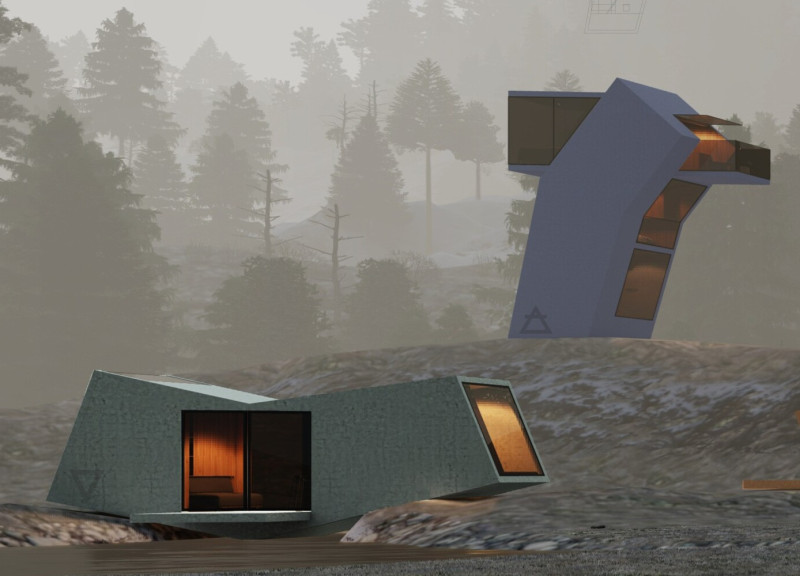5 key facts about this project
This architectural endeavor illustrates a careful consideration of space utilization, where each area has been meticulously designed to fulfill a particular function. The main structure prominently features open-plan layouts that promote fluidity and interaction among occupants while maximizing natural light through strategically placed large windows. This design choice not only enhances the aesthetic appeal of the interiors but also establishes a direct dialogue between the exterior environment and the indoor spaces, fostering a sense of connection to nature.
The materiality of the project plays a crucial role in its overall expression. A combination of natural and industrial materials is employed, creating a textural diversity that enriches the visual experience. Materials such as exposed concrete, warm timber, and high-performance glazing are thoughtfully integrated, allowing for both durability and sustainability. These choices reflect an increased awareness of environmental stewardship, drawing from local sources where possible while ensuring the architecture is resilient to the climate of its location.
What sets this project apart is its unique design approach, characterized by an emphasis on functionality without sacrificing aesthetic value. Architectural features such as shaded overhangs not only serve a practical purpose by minimizing heat gain but also contribute to the architectural language of the design. The roofline, with its gentle slopes and breaks, introduces a dynamic visual rhythm, while the careful placement of outdoor terraces creates inviting spaces for relaxation and social interaction. Such elements underscore a commitment to enhancing the quality of life for users by fostering community engagement and connection.
This architectural design also reflects a broader conceptual idea, weaving in aspects of biophilic design that seek to strengthen the relationship between people and nature. By incorporating elements such as green roofs, living walls, and native landscaping, the project encourages biodiversity while providing a calming influence to the built environment. The fluid flow of indoor and outdoor spaces allows residents and visitors alike to experience the benefits of nature directly, thereby enhancing their well-being.
Furthermore, the project's integration of renewable energy solutions showcases a commitment to sustainability. The implementation of solar panels and energy-efficient systems underscores the vision of a forward-thinking architectural practice that prioritizes long-term environmental impact. These features not only align with contemporary ecological demands but also position the project as a model for future initiatives within the realm of sustainable architecture.
In examining the architectural plans, architectural sections, and architectural designs that represent this project, one can appreciate the layers of thought and planning that contribute to its success. Each detail, from the choice of materials to the configuration of rooms, reflects an intention to embody the values of community, sustainability, and aesthetic harmony. This project stands as a testament to modern architectural practice, where form meets function in a thoughtful and meaningful way.
For those interested in delving deeper into this architectural project, further exploration of its architectural ideas and presentations is encouraged. Viewing the comprehensive visual documentation will provide richer insights into the design elements and the thoughtful planning that came to define this remarkable architectural work.


























